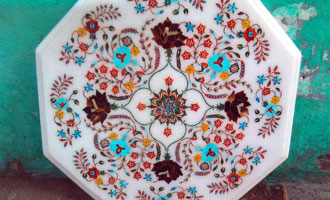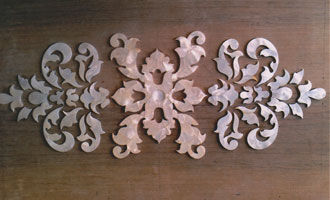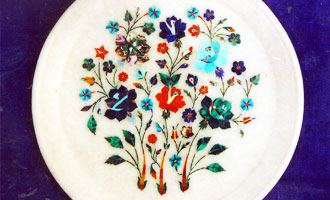
Inlay work
The Italian word Pietra dura literally means hard rock but is perhaps better translated as durable stone. This intricate marble inlay artwork first appeared in Rome in the 1500ís but actually reached its full creative sophistication late in the same century in Florence. Pietra dura soon appeared on easily transportable items and consequently the Mughals were introduced to its splendor via gifts and examples that travelled from Europe to the Middle East. In the 17th century, they in turn showered India with their own adaptation of the same beauty in the form of the magnificent marble inlay work adorning the Taj Mahal in Agra.
Probably the most revered and treasured monument of love of all time, the Taj Mahal is a fine example of the passion and dexterity involved with this type of artwork. Commissioned by the Mughal Emperor Shah Jahan, almost 22,000 artisans made Agra their home during the 22 year period of construction. Since this time, this delicate handicraft has remained a fundamental element of Agraís heritage. Passed down from father to son, the tradition has been kept in the family all these years. As a result, the highly skilled craftsmen who fashioned the Taj Mahal are the forefathers of the artists who are partners with us here at RETRO ART.
Today, Indian marble inlay craft or Parchin kari is one of the most attractive and popular forms of art on the subcontinent. Techniques have remained virtually unchanged and to this day everything is created exclusively by hand. The long and detailed process requires great artistry, patience and precision. Therefore only experienced masters of the art are able to produce high quality.



